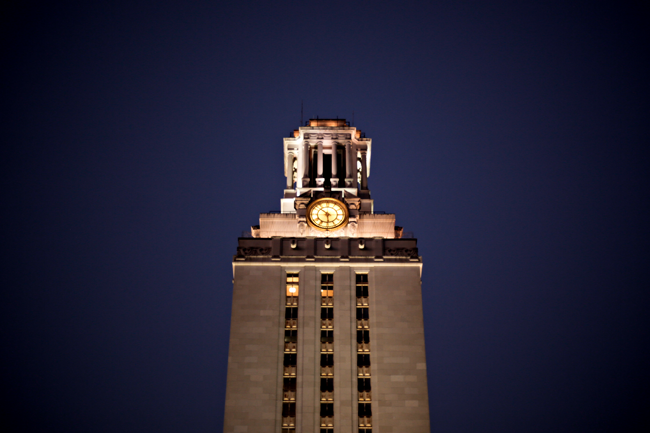Last week, a front-page story in The Daily Texan reported that the UT Tower, the grand monument at the center of our campus, is more than half vacant. Moreover, the University plans to empty and repurpose the remaining office space: Seventeen of the building’s 32 floors are formally categorized as “vacant” or “future storage space.” Though the upper floors of the Tower may never be used regularly by UT students and staff again, there is one working plan that may keep them of use to the University: The space may be used to store plant specimens from the plant resource center, which currently occupy six of the Tower’s lower floors. Plants, unlike people, won’t crowd the stairways in the event of a fire, and it is these safety concerns that have led to the emptying of UT’s most prominent building.
The remaining offices in the upper levels of the Tower will soon be vacant as well, as these concerns about evacuation safety — the upper levels of the Tower have only one staircase, and one exit is not nearly enough to allow office workers to safely evacuate in the case of a fire — have led UT to empty them once and for all.
According to UT Fire Marshal James Johnson, the chances that the higher levels of the Tower will ever be safe for occupants are slim.
“There’s no way we are ever going to be able to build another stairwell — it’s impossible,” Johnson told the Texan last week.
Fire code concerns aside, it’s worth asking how UT’s most monumental building became so monumentally empty. The answer, as a consequence of its own architecture, is a keen reminder of the importance of building spaces that are both beautiful and usable in a year in which the University will break ground on the new Dell Medical School.
The Tower is part of a group of buildings built from 1910 to 1942 which, as architecture professor Larry Speck wrote in “The Texas Book,” “demonstrated palpably to its public the ambitions of an emerging institution.”
In the original designs of Cass Gilbert, the nationally renowned architect employed by the UT-System Board of Regents who began crafting a master plan for the UT campus in 1910, the design of the Main Building was at first a grand dome, then a pillared temple, then, finally, a tall, thin tower situated on a broad base.
Twenty years later, construction began on UT’s new Main Building when French-American architect Paul Cret began his contract with the regents in March 1930. In 1931, the Texas Legislature had just authorized the creation of the Permanent University Fund, a pool of money funded by oil income that the regents were afraid the Legislature would quickly snatch away. Scared of this possibility, the regents ordered Cret to put the money toward building quickly, and he did, designing 10 buildings, among them the Main Building, which was built in two phases in 1933 and 1937. The Tower, both in its style and placement, was exactly the way Gilbert had envisioned it more than a decade before.
The Tower was meant to house both administrators and a grand library, the remains of which are still open to students in the form of the Life Science Library.
But despite the Tower’s striking profile, not everyone admired the building. Legendary folklorist and former UT professor J. Frank Dobie once referred to the top of the Tower, with its deeply recessed balconies and proud columns, as a “Greek outhouse.”
Now, trips to the top of the structure are rare, as even current students must buy tickets and reserve a date in advance. The University first closed the Tower after engineering student Charles Whitman took several rifles and a sawed-off shotgun to the top of the building and killed 16 people and wounded 16 others in 1966. The Tower briefly reopened after the shooting, but seven suicides later, it was closed to the public. In 1999, it reopened with precautionary rails and set tour times.
Now, enough years have passed that we can look at the Tower without — as John Schwartz, editor-in-chief of the Texan in the 1980s, put it in “The Texas Book” — seeing the top of the Tower as “a perch known mainly for its association with mass murder.” But we still can’t see it as Willie Morris, another former editor-in-chief of the Texan, saw it when he first came to UT in 1952. In his memoir, Morris wrote the following of his first day at UT: “That first morning I took the elevator to the top, and looked out on those majestic purple hills to the west, changing to lighter shades of blue or a deeper purple as wisps of autumn clouds drifted around the sun; this, they would tell me, was the Great Balcones Divide, where the South ended and the West began.”
The Tower may now be nearly empty, but the Texas we view from the top is hardly the one Morris saw that morning in 1952 — the country not nearly as mythic and the University not nearly so new. But even if the Tower stays empty, it will certainly always stay grand, and the University must now reflect on what the Tower truly stands for: a proud monument to the campus’ past or a daily, unavoidable reminder of the limitations of working off of a centuries-old University structure.
















